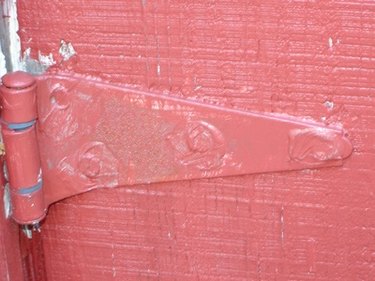Things You'll Need
Ammonia-based cleaner
Mask
Goggles
Gloves
Chemical paint stripper
Paintbrush
Paint scraper
Sandpaper
Palm sander
Rags

Lacquer paint is one of the thickest and stickiest paints that you can apply to your furniture or cabinets. Removing this paint is no walk in the park. It can be done with a good amount of chemical remover and some elbow grease. If you are planning to re-paint the object, applying the paint over the top of the lacquer will be considerably easier than stripping the paint. If removal is your only option, roll up your sleeves and get ready to work.
Step 1
Scrub the surface completely with ammonia-based cleaner. Rinse with water and towel dry.
Video of the Day
Step 2
Put on a mask, gloves and goggles. Paint stripper is noxious and should not be inhaled.
Step 3
Apply a 1/4-inch thick layer of chemical paint stripper to the cabinet or furniture. Allow the stripper to penetrate the paint for about 20 minutes. Test a small section of paint with your paint scraper to determine if the paint has softened. Paint will scrape easily from the wood once softened. Test every five minutes until the paint is soft.
Step 4
Scrape the paint from the cabinet with a paint scraper. Hold the scraper firmly and push it away from you. Wipe the residue onto a rag. Remove all of the chemical scraper and most of the paint.
Step 5
Remove remaining paint residue with sandpaper. Attach medium-grit sandpaper to a palm sander. Apply medium pressure to the painted surface. Remove as much paint as possible, until you only see the original surface underneath. Wipe away sanding dust with a damp rag.
Step 6
Fold a loose piece of sandpaper in half so that the backing folds onto itself. Use the corner of the paper to sand any areas the sander can't reach.
Step 7
Attach fine-grit paper to the sander. Sand the entire object with the fine-grit paper. Sanding with fine-grit paper will remove all of the tiny scratches left by the medium-grit paper. Sand the surface until the item is smooth to the touch.
Step 8
Wipe away all sanding dust with a damp rag.
Tip
You are now ready to stain or repaint your bare wood. If a natural wood finish is what you are trying to achieve, use a clear coating of mineral oil to protect the wood from water damage and warping. Rub the mineral oil into the wood with a clean rag.
Video of the Day